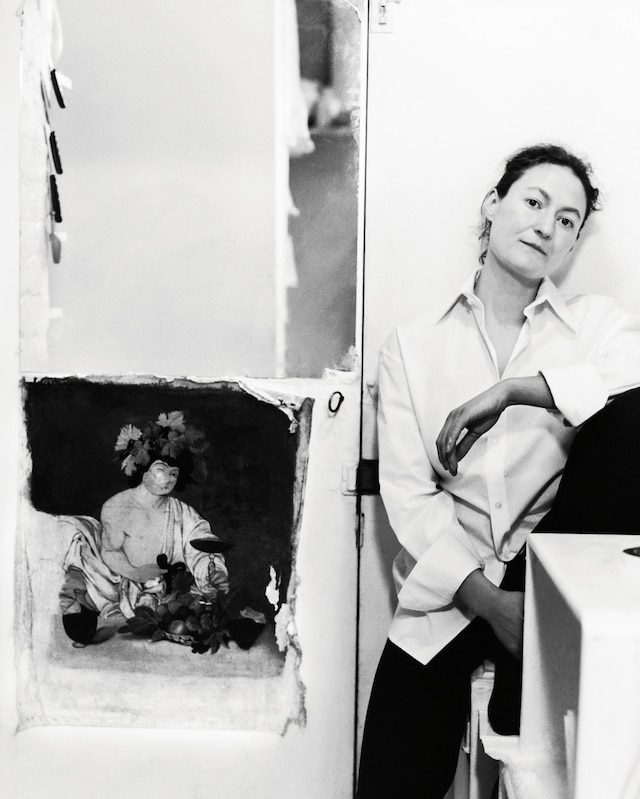Miranda Keyes talks about her love of 17th-century Alsatian artist Sebastian Stoskopff, and how his paintings inspire her otherworldly glass sculptures
This article is taken from the Spring/Summer 2025 issue of AnOther Magazine:
“When I was a kid I won a book on the 17th-century Alsatian painter Sebastian Stoskopff in a competition. All of Stoskopff’s paintings are brilliant. There’s one with a little artichoke in a pool of melted butter and a fish in a tub of beautifully rendered water [Brazier with Artichoke, Woodpeckers and Watertub with Carp, c1635]. Here, his objects are solid, real – they’re very much of this world. It’s his paintings of glasses and reflective surfaces that mesmerise me. Glass flouts logic, it defies belief – reflecting, inverting and becoming its surroundings. In his painting Basket of Glasses and a Meat Pie [c1630], Stoskopff captures this. Where other still life artists of the era might have filled their glasses with wine, changing the form and depth entirely, Stoskopff painted them, lots of them, empty. In doing this, it becomes an exploration of the surface itself and the complex interplay between light and dimension – these powerful and almost incomprehensible forces. I think it’s probably why my own creative process extends beyond glassmaking itself to an image-based enquiry, using a camera as Stoskopff used his paintbrush, into all the ways that glass and light and dimension converse.”
As a sculptor working predominantly with glass, Miranda Keyes employs an intuitive and synergistic dance with spontaneity, persuading the temperamental material into sinuous sculpted vessels. Fragile and yet often functional, warped with an ominous and enchanting fluidity, her pieces have something otherworldly about them.
Keyes formally trained in bronze sculpture at Edinburgh College of Art, before leaving for Berlin on an Erasmus exchange trip. She was reluctant to return to Scotland, surrendering her degree qualification to stay on in the German capital, renowned for its sculptural heritage, for five years. Her transition to glass coincided with her return to London, where she grew up and is now based in a studio in Bermondsey – which, not being known for its foundries, made working with bronze difficult. Approaching glassmaking with “no bed-rock of knowledge and no baggage”, aside from a necessary respect for both heat and protocol forged through her bronze work, renewed her creativity. What started in pursuit of passion quickly became her profession – this past winter she held solo shows in London and Istanbul and this spring is participating in a group exhibition at The Ragged School in Borough, London, curated by the interior designer Jermaine Gallacher.
Styling assistant: Precious Greham. Hand-printing: Merrick d’Arcy-Irvine
This story features in the Spring/Summer 2025 issue of AnOther Magazine, which is on sale now.
